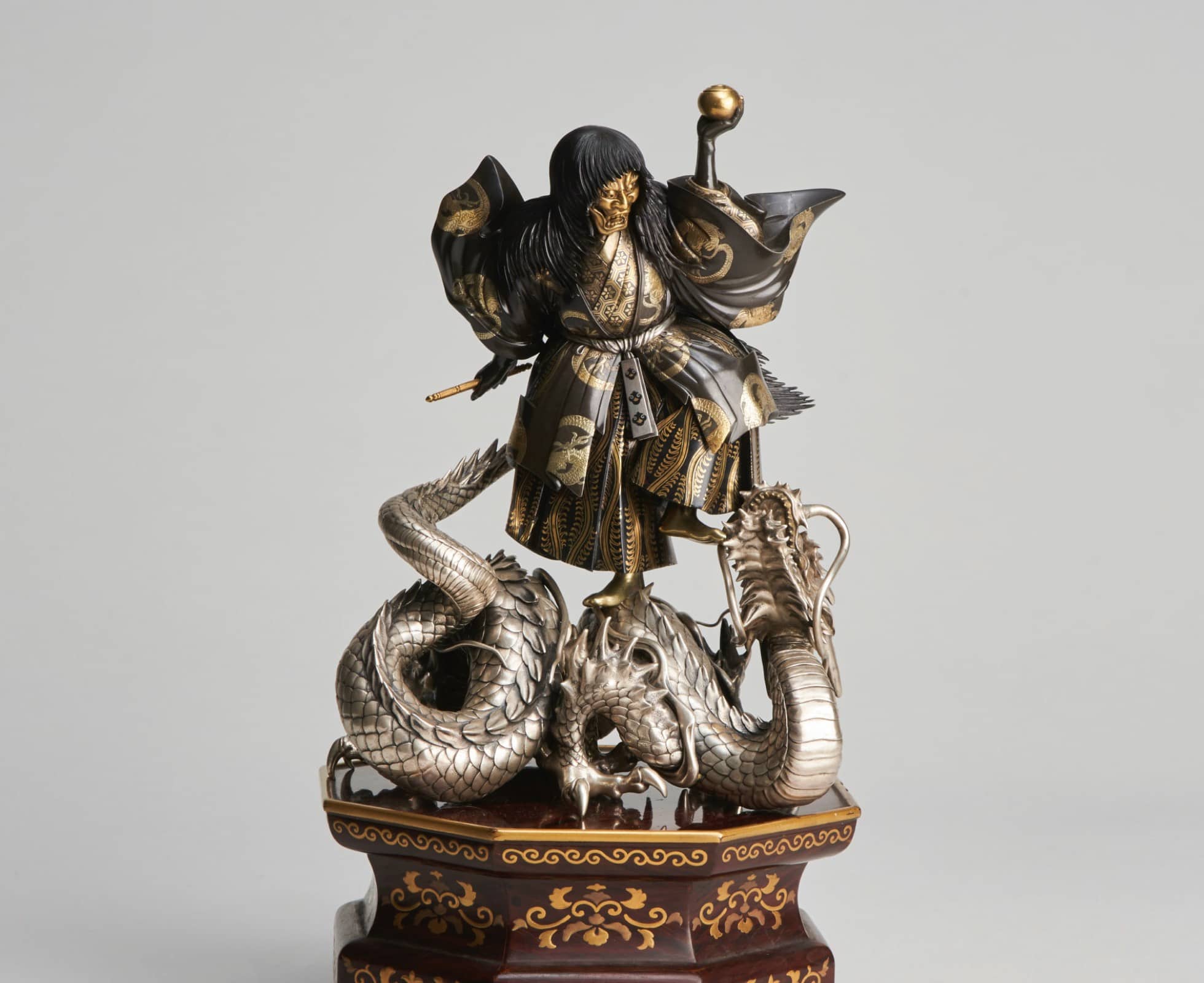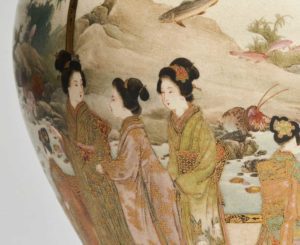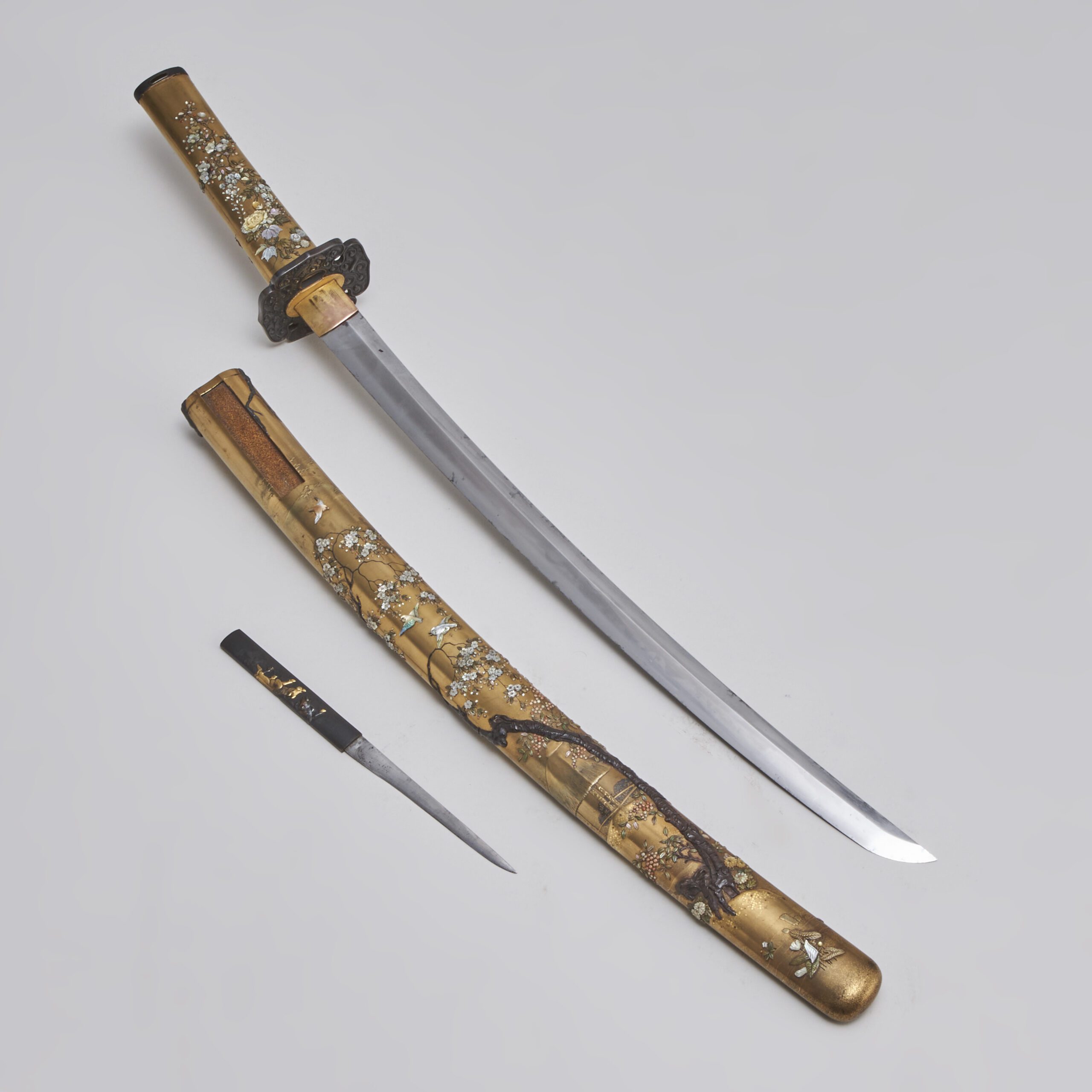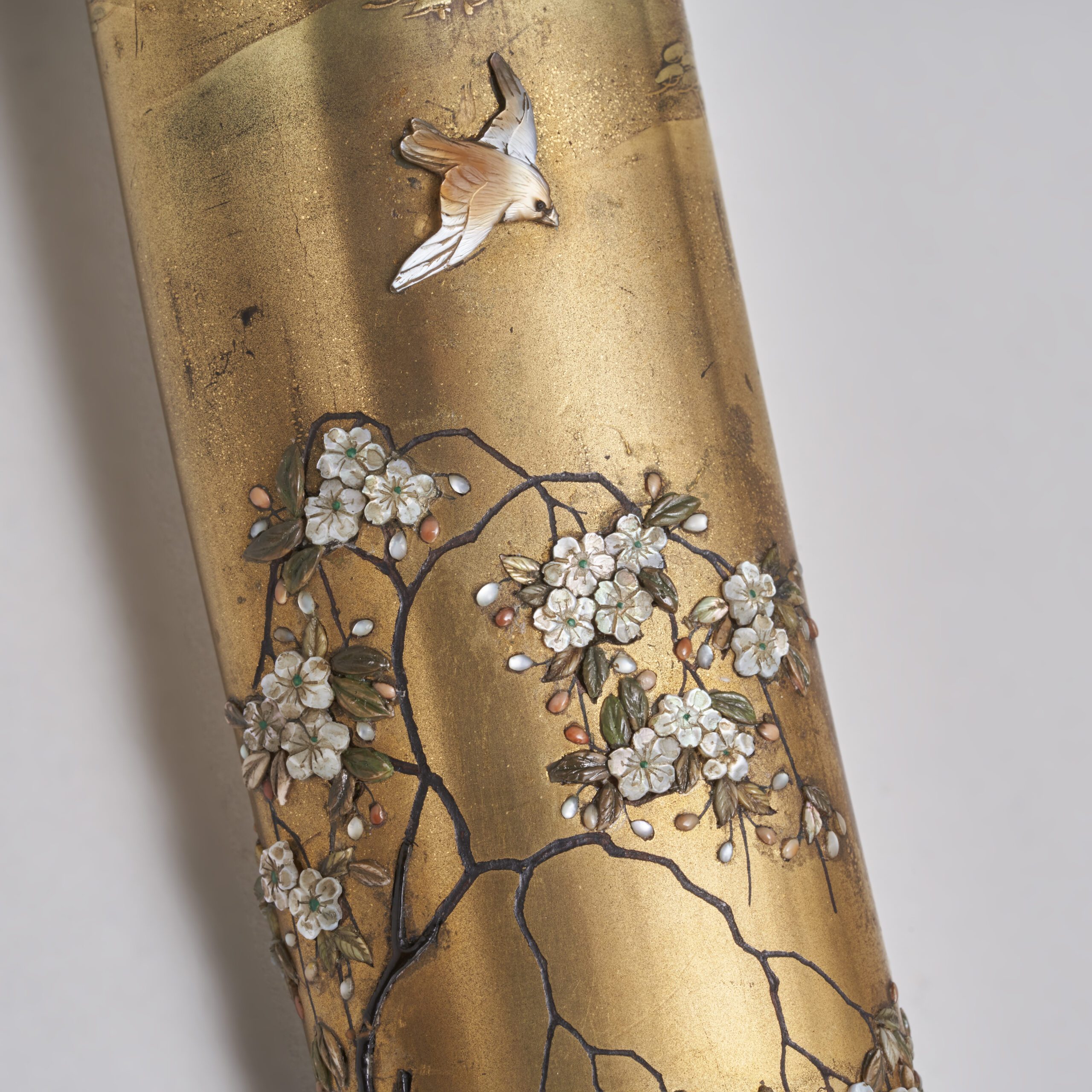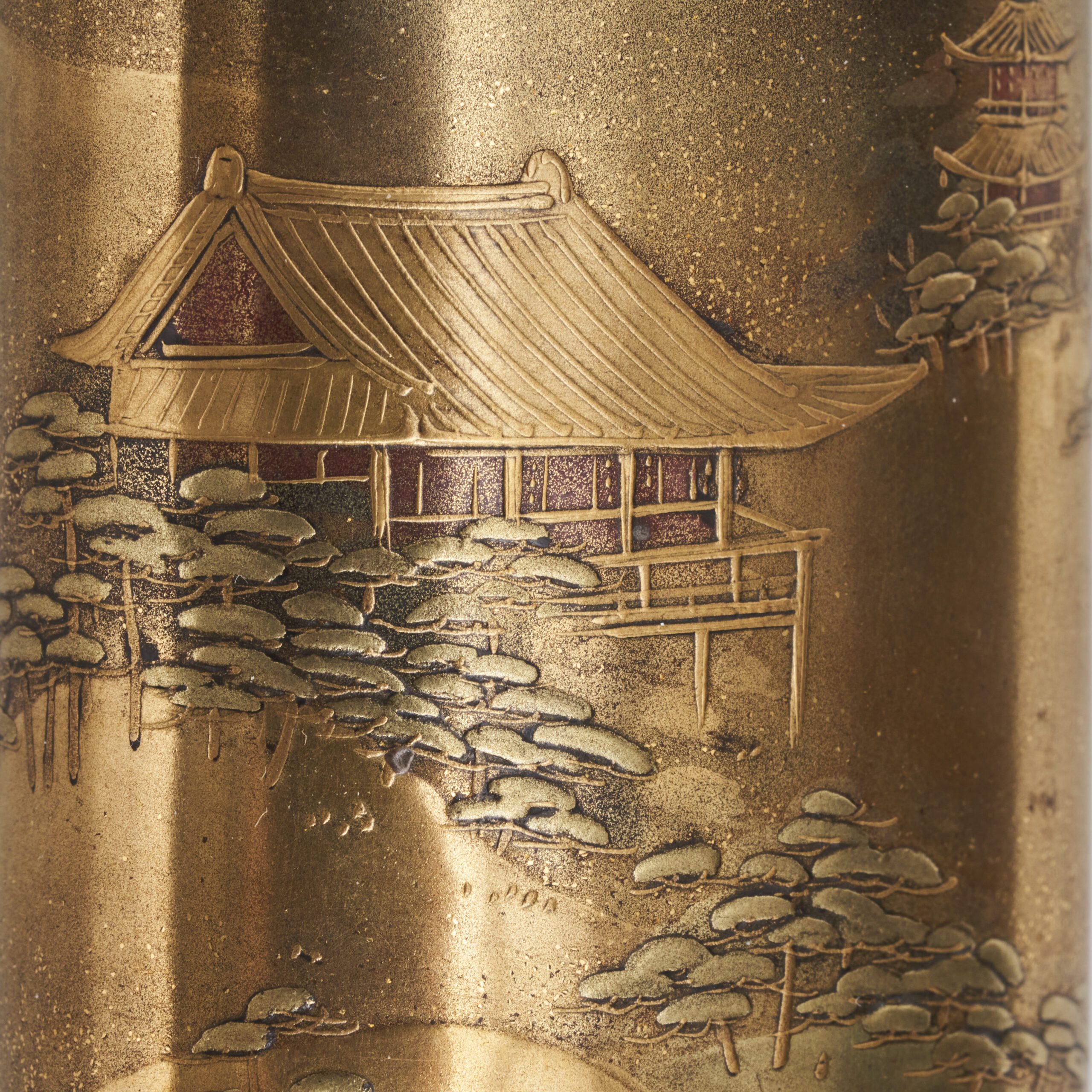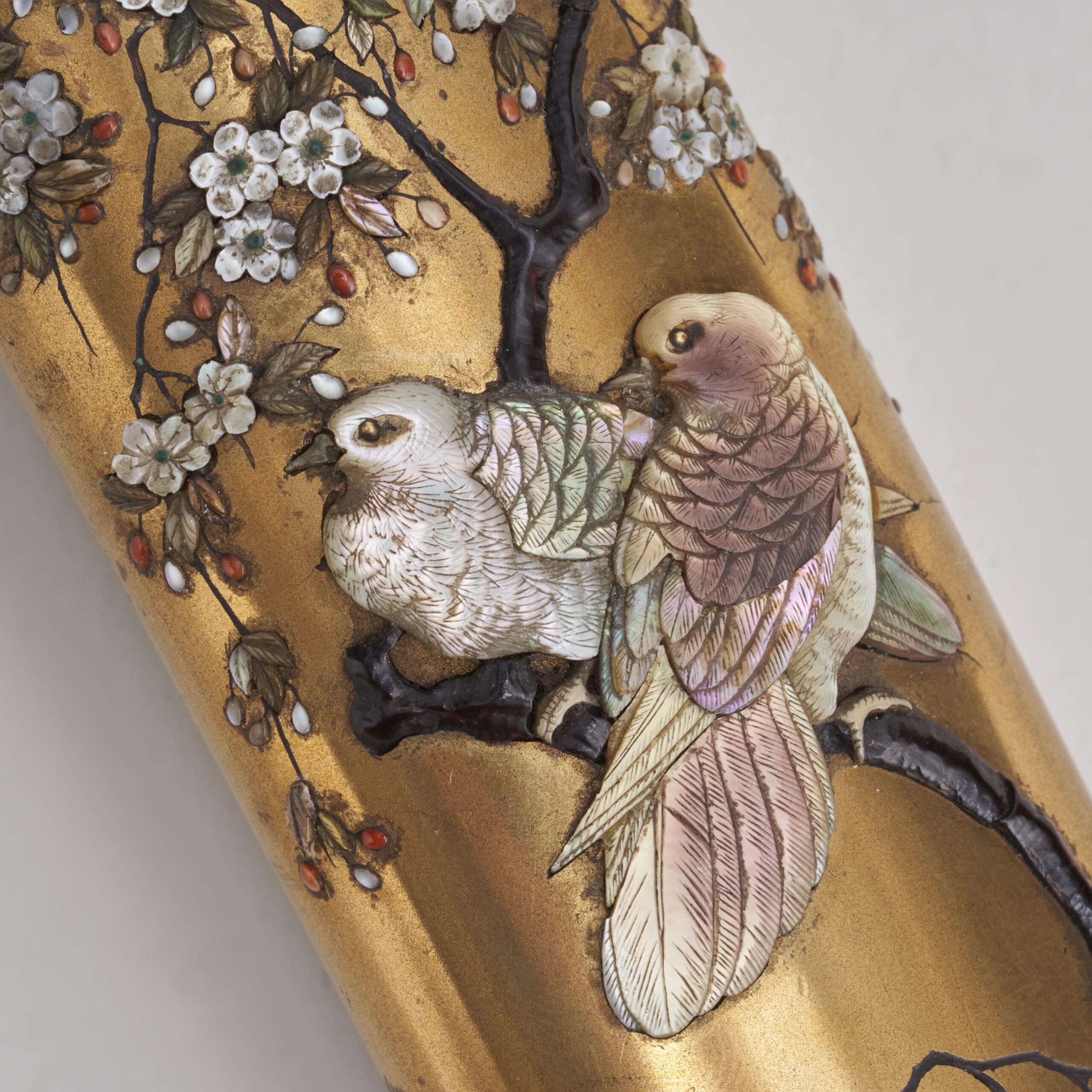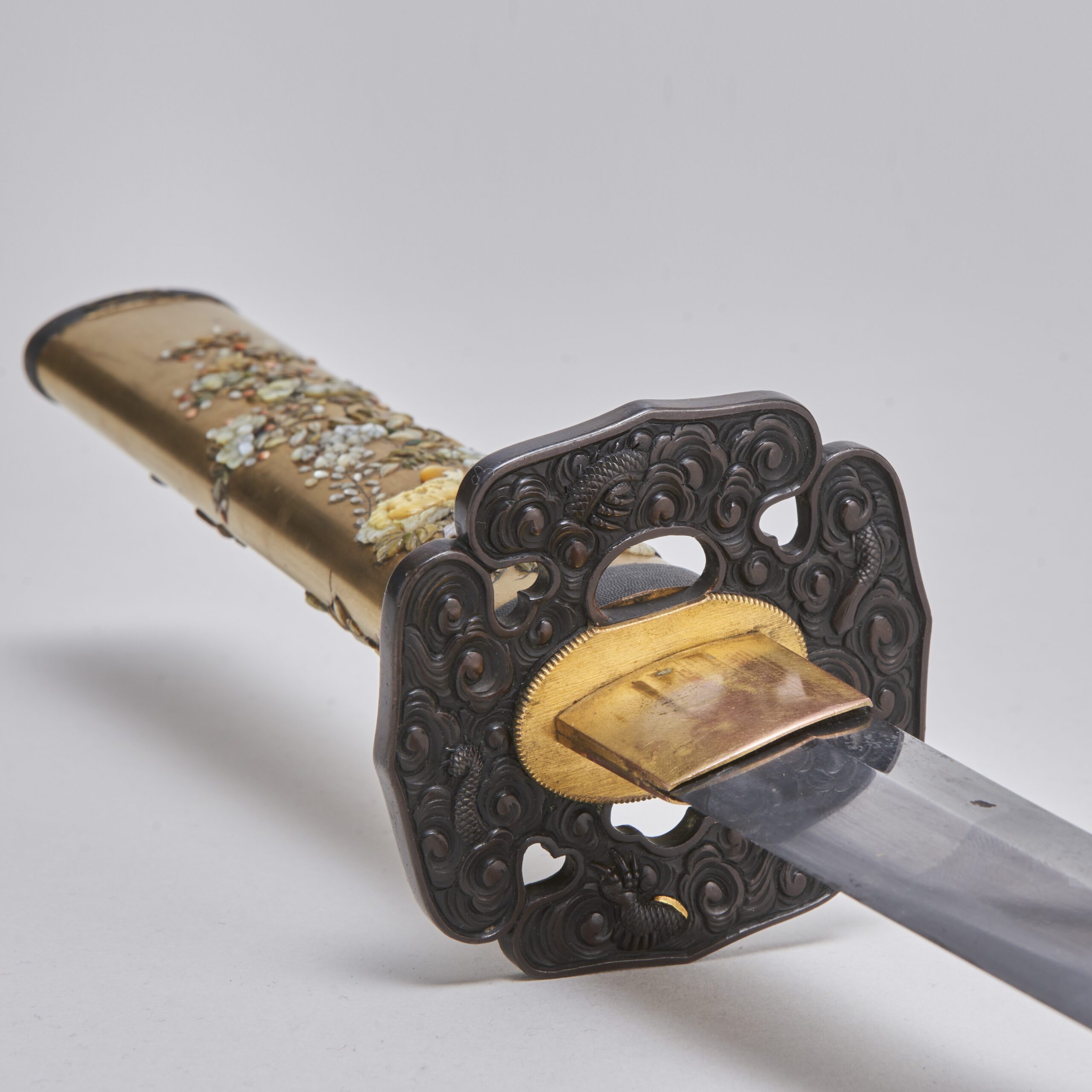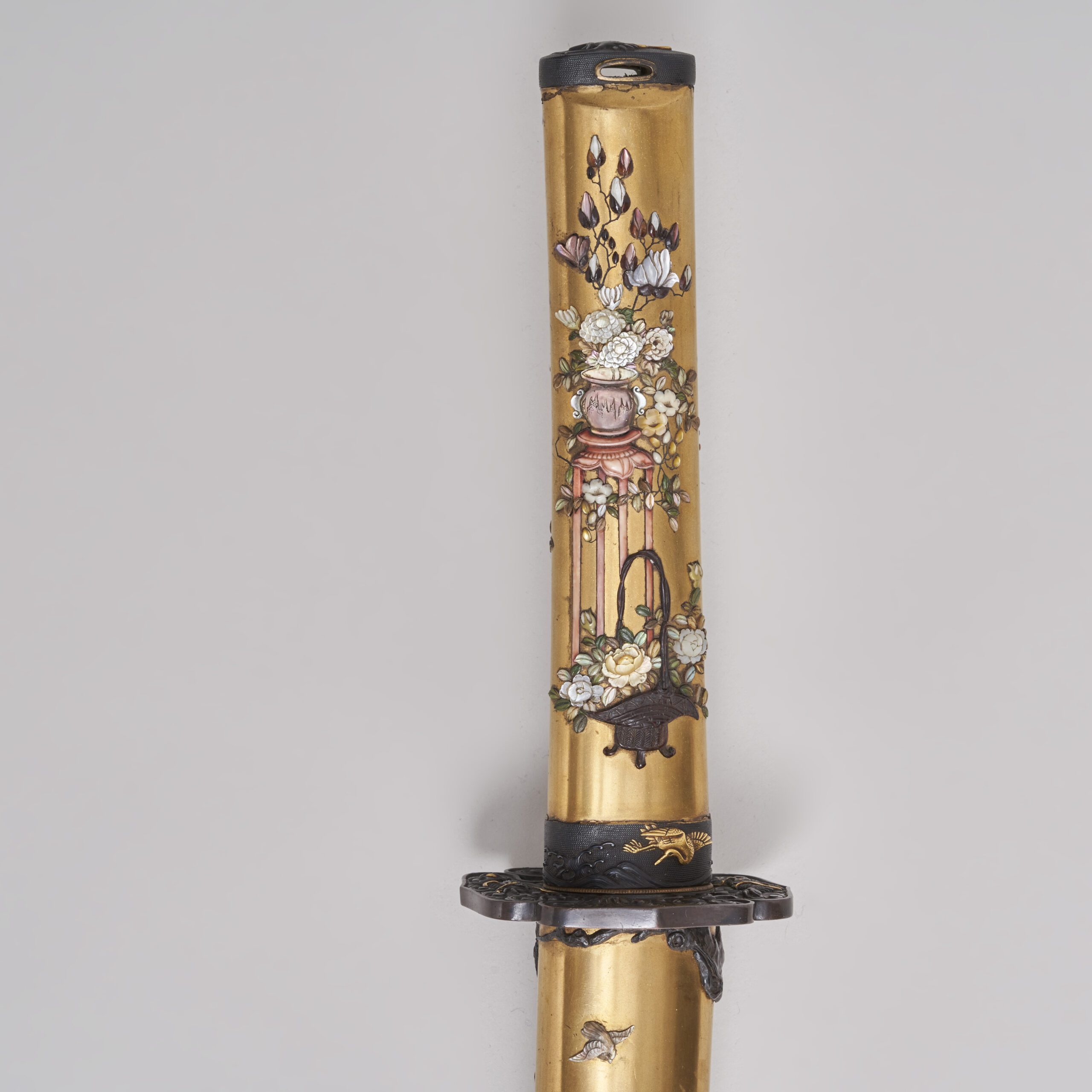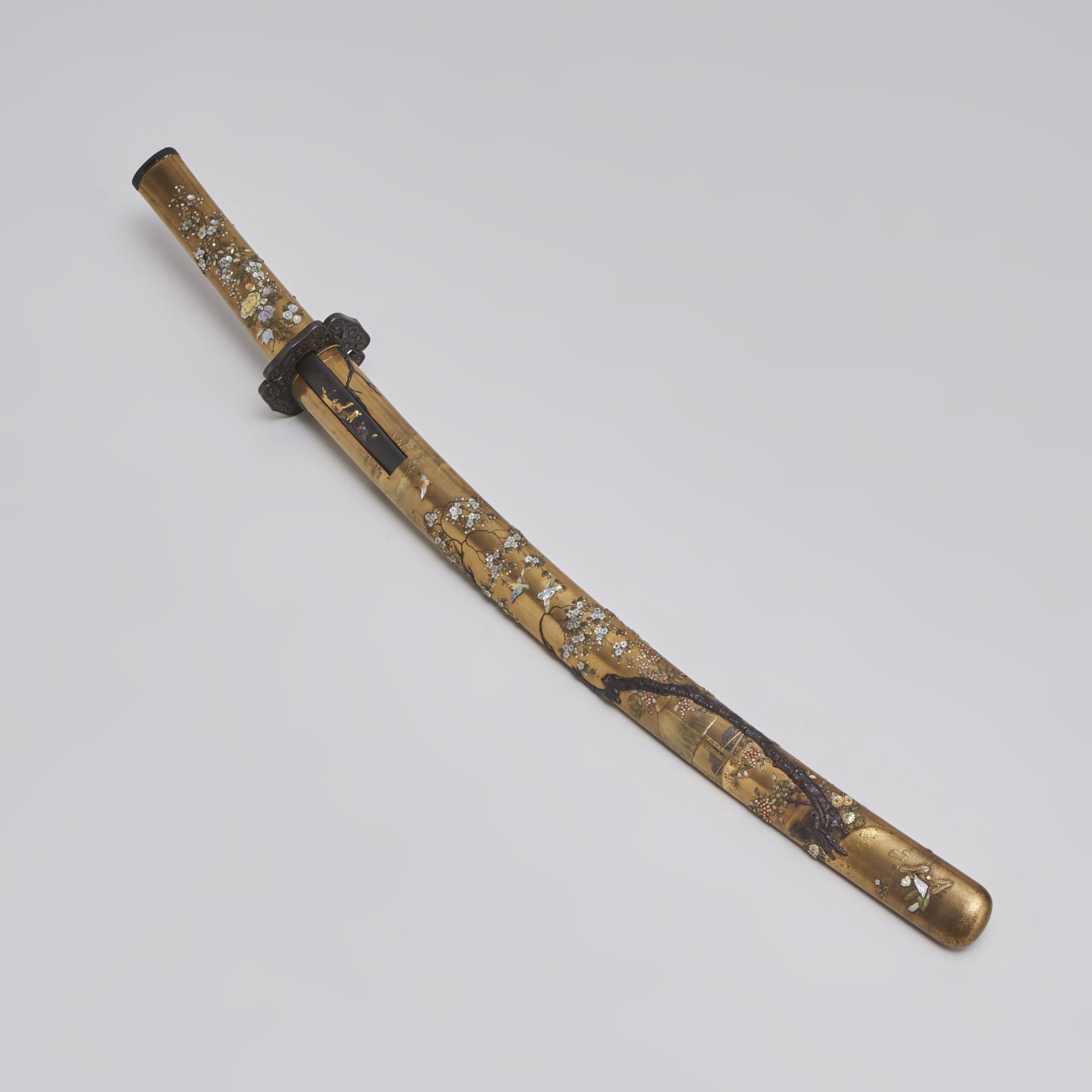We are delighted to showcase something very special for this Month’s “Featured Item”.
This exceptionally fine Japanese Meiji-era (1868-1912) Wakizashi Sword is a recent additional to our collection of Oriental Art and is one of the finest examples of late 19th Century Master craftsmanship that we have ever seen. (As always with our Featured Items, you can click on any of the below images to see the product page.)
The side of the Saya that would be worn against the body is decorated with a gnarled Cherry Blossom tree both applied and partially etched into the surface of the lacquer. A brand of the tree wraps around, and almost merges with the Tsuba cleverly bringing the two elements of the sword together.
The tree, although twisted and a little sparse in places still blooms with beautiful Cherry Blossoms, this is a well-known metaphor for birth and death and beauty and violence. Sakura (Cherry Blossom) has long been associated with the eventful but often short lives of the Samurai.
To continue the symbolism and meaning found in this sword, brightly coloured Sparrows fly among the laden branches of the blossom tree, these birds often associated with prosperity and longevity.
Under the tree and depicted in shaded lacquer, a small, thatched hut can be seen. It is likely that his is a Shinto Shrine. Shintoism is a belief system that was prevalent among the Samurai.
The long arms of the Cherry tree continue to the outside of the Saya as two Doves rest on its branches while a Mandarin Duck swims in the river below. A lakeside Pagoda Temple can be glimpsed in the background towards the hilt of the Sword.
Each individual element of the the elaborate Shibayama-style decoration is minutely considered with the most suitable material selected for both luminosity and realism. Materials in the decoration include Mother-of-Pearl in various shades of white, blue and purple, Abaolne Shell, natural and stained Ivory and bone, red coral, horn and finely carved wood. This is all set into a Gold lacquer ground which utilises Maki-e (sparkling technique) technique to great effect.
The fragility and impracticality of the “Tsuka” (handle) and Saya confirms that this Sword was made as an item to be displayed and admired. It would have been worn rarely and purely as a display of status and wealth.
Japan had been a feudal country for many Centuries but after the Emperor Meiji came to power in 1868, the Shogunate control ended and Imperial rule was restored. This ushered in an age of rapid modernisation and Westernisation. There was no place for the Samurai of old in this new modern Japan and so, after the Meiji Restoration, they were abolished.
However, despite the end of the Samurai, their symbolism and relics very much remained and do so to the present day. The Samurai Sword was a utilitarian object, beautiful through its functional form. It was often said that the Sword was the “Soul of the Samurai”, symbolising the warriors’ devotion to their art. This elaborate Wakizashi honours the classical form while transcending its bloody history to become an expression of the craftsperson’s devotion to their artistic skill.
The Tsuba (hand guard) is of Kurikomi Mokko Gatta form and is cast in Bronze with carved decoration of Dragons among swirling auspicious clouds. Dragons are another classic symbol of both Japan and the seat of the Emperor as they represent strength, power, wisdom and generosity.
The Fuchi-kashira (the pommel and band below the Tsuba) are also made of Bronze. Due to the way in which this decorative sword was made, they are fixed directly to the wood of the handle. On a functional sword they would be removable and usually held in place with silk cord and wooden pegs. The Fuchi-kashira are decorated with a Gold Crane flying above a turbulent sea, (The Crane being another symbol of Japan and long-life.)
The Kozuka (a small utility knife) fits elegantly into the larger Saya. Kozuka were often used for eating or for other practical purposes where the main blade would be too large or cumbersome for. The Kozuka here hasa Bronze handle and is decorated in Bronze, Copper and Gold with a depiction of two playful horses. Horses were an intrinsic part of being a Samurai Warrior. For over 1,000 years. The Samurai were primarily mounted Warriors before transitioning to more foot-based warfare. Only the Samurai were allowed to ride horses into battle as the horse was seen as a special weapon. Warriors would form a lifelong bond with their equestrian companion, treating the intelligent animals with respect.
The blade of the sword is of classical Samurai form and is moderately sharp to the touch. Unfortunately, because of the way the sword was constructed, the handle is inaccessible so it is not possible to see if there is a signature as revealing it would cause damage.
The Saya is signed “Masayoshi” on a small red seal towards the base of the sword.
To finish, here is a useful Glossary of terms used when describing Wakizashi:
Wakizashi
A wakizashi is the smaller cousin of the Katana it is between 30-60cm long (between 1-2 shaku) it was often worn alongside it as a backup or auxiliary sword used more for close fighting, such as beheading a defeated opponent. It is important to note that it is not merely a smaller version of the katana as it is forged differently, though with a similar technique. It was also popular with people who were not of Samurai class as it was the largest sword they were allowed to carry as a defence. Its name translates as ‘side inserted sword’ due to it often being worn tucked though the obi (sash belt).
Shibayama
Shibayama is a style of inlay decoration used to create a design on wood, ivory or lacquer. Small pieces of shell, horn, coral, wood, ivory, bone and other colourful precious materials would be semi-inland into the base material to give a 3D effect.
The style of decoration is named after the artist Shibayama who created and popularised the artform.
Tsuba
A tsuba is the hand guard for a Japanese sword, they balance the sword, protect the hand from an enemy blade and show status. Tsuba have become collectible works of art in their own right.
Fuchi kashira
The Fuchi-kashira refers to two parts, the fuchi is a strengthening band fitted to the handle side of the sword, and the kashira is the pommel. They are often a matching set featuring similar designs. They can be made of iron or bronze.
Kozuka
The Kozuka is a small utility knife attached to the saya of a larger sword, often a Wakizashi or Katana, they were used for eating and everyday tasks the main blade was too big or precious for.
We hope you found this article interesting. You can browse over 100 blogs inspired by our collection of Chinese and Japanese Fine Art and Antiques by clicking here.

